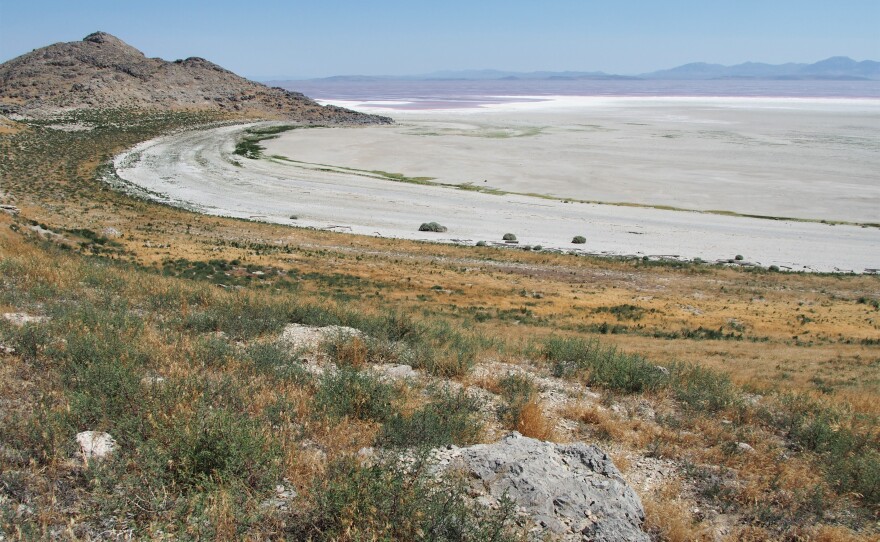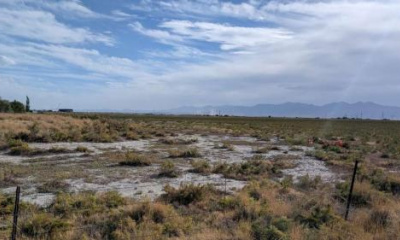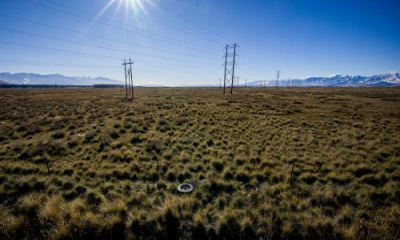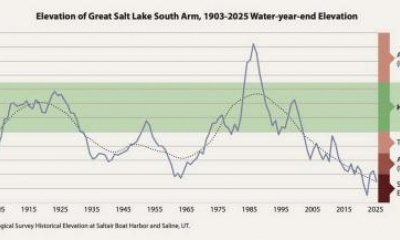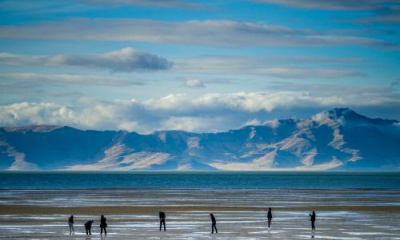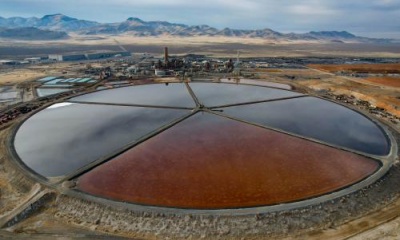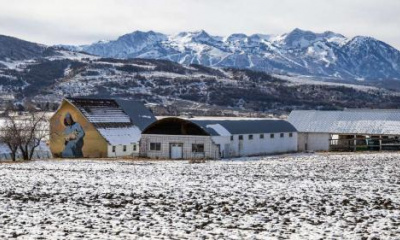Aimee Van Tatenhove is a science reporter at UPR, who has largely focused on Great Salt Lake issues. However she has even greater ties to the lake ecosystem as a PhD student in the Wildland Resources Department at Utah State University. Aimee’s work has focused on studying American white pelican populations in Great Salt Lake.
In the hyper-saline north arm of Great Salt Lake, where salinity levels max out at around 30%, Gunnison Island hosts one of the largest breeding grounds for American white pelicans in the world. At its peak, nearly 20,000 pelicans nested on its shores.
The Utah Division of Wildlife Resources monitors the pelican colony, and other Great Salt Lake avian populations through regular surveys. A recent lakewide survey for phalaropes brought surprising news about the pelican colony to the DWR and researchers like Aimee. We caught up with Aimee just after she accompanied DWR officials on a visit to the site.
ERIN LEWIS: In this recent shorebird survey, what observation really stuck out to researchers and government officials?
AIMEE VAN TATENHOVE: On this phalarope survey the people doing the flight flew by Gunnison Island and they noticed the pelicans were gone — like, they’re gone gone. So the division noticed there were very few adult pelicans during their pelican survey in June, which isn’t entirely abnormal because the adults are often out foraging for food, but they also noticed very few chicks on the island. And then to see essentially no pelicans at the colony during the phalarope survey really raised some hairs on the back of people's necks. And so now they are trying to figure out what happened at the colony to cause this abandonment.
ERIN LEWIS: So does this mean there are any pelicans at all left at the colony?
AIMEE VAN TATENHOVE: Yeah, so we went up to the colony to confirm that it was essentially abandoned and to see if we could find any clues as to why. And there were about 40 chicks that were on the island and fortunately, it seems like the parents are still coming back to feed them, which is great. But compared to the number of chicks you'd expect to see in a good year, this is essentially nothing.
ERIN LEWIS: Are there any hypotheses yet as to why this has happened?
AIMEE VAN TATENHOVE: So the low numbers that they saw earlier in the spring, that might be related to Great Salt Lake water levels. So even with water levels up a bit this year, the lake is still low, and pelican numbers have been declining since late 1980s as water levels have declined.
But the full-on abandonment? We don't really know yet. It seems a bit sudden that the water levels would just cause a switch to flip.
There are a number of coyotes on the island, just because the water levels have been so low and the island isn't an island anymore; it's a peninsula. So we went out there and we looked around and we didn't see any coyotes, but there's really good evidence that they're there. Perhaps there's more coyote disturbance than in previous years and they all just abandoned. However, coyotes have been present on the islands since around 2016, so their presence there alone probably isn't what caused complete abandonment.
Another potential factor is avian influenza. Other colonial nesting birds have been hit really hard by avian influenza, so it's not out of the question. Theory is that some of the pelicans got sick, and other pelicans at the colony noticed and left as a reaction to that. On our trip, we took some swab samples from the chicks at the colony, but we're still waiting to hear back about the results.
So otherwise, we're not really sure. Something has changed and we just aren't sure what yet.
ERIN LEWIS: Water diversions and drought have been shrinking Great Salt Lake since the 1980s. This spring, however, we saw much more precipitation to the mountains and lakes downstream and are seeing increases in the lake’s water level. Is that something that could play into it at all?
AIMEE VAN TATENHOVE: The water level increase as we saw with our awesome snowpack this year have probably been overall very helpful to the pelicans. But those water level increases have mostly happened in the southern part of Great Salt Lake, and not out near the colony, just because the causeway limits the amount of water that flows into the north arm of the lake, especially with the causeway berm being raised earlier this year.
So snowmelt hasn't really helped protect the colony from terrestrial predators like coyotes. And when we're going out to the colony, it wasn't anywhere close to an island anymore: just salt flats and deep mud between the colony and the mainland.
ERIN LEWIS: Do you know of anything like this happening before in pelican populations, particularly in a nesting area?
AIMEE VAN TATENHOVE: Yeah, so pelicans are really interesting because they can travel a long distance. And as far as we know, they'll move between breeding colonies or they will, because they live so long, take a year off from breeding and it's not a huge deal.
But if this becomes the norm and Utah's pelicans quit breeding in the state entirely, we may see significant impacts to the regional pelican population, because historically the Gunnison colony was so large and productive. On the bright side, the Gunnison colony has gone locally extinct before, but that was largely due to direct human disturbance when a group of people stationed themselves on Gunnison Island to mine Pelican guano for fertilizer back in the late 1800s.
But abandonment as a direct result of environmental conditions — that's a big concern because it'll be harder to reverse then abandonment from human disturbance like we've seen previously.
ERIN LEWIS: Thanks for spending time chatting with us Aimee, we will stay tuned for future updates.

